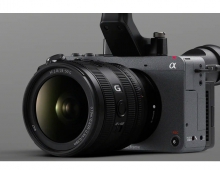
Sony Develops "CLEFIA" - New Algorithm For Copyright Protection
Sony today announced "CLEFIA", a new block cipher algorithm that delivers copyright protection and authentication for digital data distribution, such as music and images.
Based on cipher design techniques, Sony's "CLEFIA" block cipher maintains high security levels while providing both leading hardware and software implementation capabilities, according to Sony. The company will unveil the results of this development at the "Fast Software Encryption 2007" international conference, to be held in Luxembourg for three days from March 26.
Sony's newly developed "Diffusion Switching Mechanism (DSM)"technology is the result of research into improving security while reducing overall cost. The technology achieves secure cipher algorithms, even with fewer operations, by selecting the optimum diffusion matrices in the Feistel structure. This technology also enables reductions in gate size when implemented in hardware, and greater implementation efficiency when used in software.
The key advantages of "CLEFIA" are its enhanced implementation efficiency in terms of both hardware and software, and its high speed operation. When implemented in hardware it achieves maximum throughput of 1.42 Gbps using a 0.09 ?m CMOS standard cell library and gate size of just 6.1K, representing the world's highest hardware gate efficiency. Consequently, "CLEFIA" is able to provide advanced capabilities, even in restrictive environments such as smart cards and mobile devices. When implemented in software it can realize high speed performance on a wide variety of processors.
The "CLEFIA" interface corresponds to 128-bit block cipher technology such as the US government's Advanced Encryption Standard (AES), and the ISO/IEC 18033-3 International Standards. Block length is 128 bits, while key length can be selected from 128 bits, 192 bits, and 256 bits.
The "CLEFIA" cipher concentrates new cryptanalysis techniques and achieve sufficient immunity against known cryptanalytic attacks, Sony claims.
The Japanese company will seek to establish an environment in which "CLEFIA" can be used across various applications and products such as AV devices.
Sony's newly developed "Diffusion Switching Mechanism (DSM)"technology is the result of research into improving security while reducing overall cost. The technology achieves secure cipher algorithms, even with fewer operations, by selecting the optimum diffusion matrices in the Feistel structure. This technology also enables reductions in gate size when implemented in hardware, and greater implementation efficiency when used in software.
The key advantages of "CLEFIA" are its enhanced implementation efficiency in terms of both hardware and software, and its high speed operation. When implemented in hardware it achieves maximum throughput of 1.42 Gbps using a 0.09 ?m CMOS standard cell library and gate size of just 6.1K, representing the world's highest hardware gate efficiency. Consequently, "CLEFIA" is able to provide advanced capabilities, even in restrictive environments such as smart cards and mobile devices. When implemented in software it can realize high speed performance on a wide variety of processors.
The "CLEFIA" interface corresponds to 128-bit block cipher technology such as the US government's Advanced Encryption Standard (AES), and the ISO/IEC 18033-3 International Standards. Block length is 128 bits, while key length can be selected from 128 bits, 192 bits, and 256 bits.
The "CLEFIA" cipher concentrates new cryptanalysis techniques and achieve sufficient immunity against known cryptanalytic attacks, Sony claims.
The Japanese company will seek to establish an environment in which "CLEFIA" can be used across various applications and products such as AV devices.





















